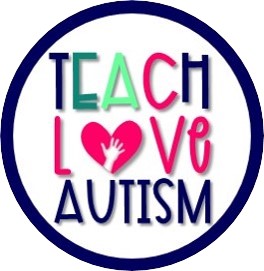How to Use Reflective Teaching to Improve Learning
Sharing is caring!

Featured guest blogger: Jennifer Hofferber, a special education teacher, and creator of the Sped Prep Academy.
By nature, teachers are keepers of things. We keep pictures and cards made by our students. We keep little notes of affirmation from our administrators. I bet you have letters from previous students about the impact we had on their lives. These little treasures fill our desk drawers and are taped on computer screens to serve as a reminder that we have made a difference.
And while I do keep all those things, I also collect quotes. In fact, this quote is printed on a little card that I keep front and center in my top desk drawer.
– Tony Frontier
“Purposeful reflection means not just thinking about our behaviors and their effect on the work we do, but doing something about it. ‘What am I going to do differently in order to better meet student needs'”
Seeing this quote daily reminds me to participate every day in the act of reflective teaching.
The Act of Reflective Teaching
Reflective teaching is a process where teachers build self-awareness and evaluate their behavior and methodologies. The goal of it is to strive for professional growth. Reflective teaching means that you take a look at what you do in your classroom, and think about why you do it. Then, think about whether this works for your students and for yourself. Basically, it is a type of professional development and it’s one that you actually have control over.
The process of reflection comes with a cycle to follow:
1. Teach
2. Self-assess the effect of your teaching on learning
3. Consider new ways of teaching that can improve the quality of learning
4. Try these ideas in practice
5. And repeat the process again!
Self-reflection never stops, even if you’re a veteran educator who has been on the job forever.
Why Don’t More Teachers Do Reflective Teaching?
To be honest, being a reflective teacher takes confidence and that is something many teachers lack. As a reflective teacher, you are having to examine yourself and dig deep into your weaknesses. It can be hard to realize that you aren’t doing the best you could, or the actions you take are causing student behaviors. It is something that as a confident teacher you need to be willing to accept and change.
Another reason it’s not a well-applied practice is just plain over-confidence. I’ve come across many teachers who think they should be given a Teacher of the Year award within their first couple of years in the classroom. They may have great ideas, are able to keep students engaged, and are loved by their parents…but they are not team players. By reflecting on their interactions with their peers and administration, they would be able to form collaborative relationships that could catapult them into the overall superstar status they seek.
Why is it Important?

The bottom line is….reflection is for YOU and YOU, my friend, are important.
When reflecting, you’re collecting information about what goes on in your classroom. When analyzing and evaluating this new information, you can identify and explore your own practices and underlying beliefs, which may lead to changes and improvements in your teaching. Reflective teaching is an example of professional development, and it’s one that you can have control over.
How Do I Make it Happen?
So now that you understand what it is and the importance of it you might be asking HOW? How do I do this?
I’m glad you asked. There are so many options and you can choose what works best for you.
You can videotape yourself, you can journal, you can blog, you can ask your admin to observe and give you feedback but all of those things take more time than you may normally have within a school day and while they are all great ideas I’ve found others that work better for me and my schedule.
Include Reflection within Your Lesson Plans
When building your lessons, you have to create a lesson plan. It’s a good idea to leave a blank space at the bottom of your lesson plan. This place can be used to evaluate your own teaching and to reflect on it.
Another suggestion is to type the questions at the bottom of the lesson plan and leave yourself room to go back later. The questions you might want to add are:
-Why was this lesson successful or unsuccessful?
-How did the students behave during the lesson and why do you think this is?
-What will I do differently when I teach this lesson again?
-Do this the very same day, since your feelings and memories will be fresh.
Be sure to note down the positive experiences, along with the more challenging ones. Later on, you can take the time to find ways to improve those problem areas.
Peer Observations

Besides your students giving you some useful input, you can also use an extra pair of teacher’s eyes. Ask a fellow teacher to follow your class for an hour or a day. This teacher is also a professional and therefore knows what aspects of your teaching need some attention. They can give you some useful tips regarding your teaching and you can return the favor. Of course, some positive feedback is always welcome and the other teacher may learn from you as well by just looking at how you teach your students.
I would recommend if you are going to use this method to tell them what you want them to look for. When you implement this type of reflection, it turns it into a collaborative effort where the teacher discusses their strengths and weaknesses with colleagues. Because of that, you are going to want to choose someone you trust to give you honest feedback with the intention of helping you grow.
Observe Other Teachers
Observing other teachers is a key part of your own professional development. It improves your self-awareness of their skills and also makes you more effective at identifying areas for further growth. Each teacher has their own unique style of teaching and by observing, watching, and processing, you can pick up on the things you like and the things you don’t like. The power of observation is that you get to choose the bits and pieces you either like or dislike about the way another person teaches and internalize them to make yourself a more effective educator.
Don’t Overthink Reflective Teaching!
Most teachers are aware of the benefits of reflective teaching. However, with our busy lives, it’s easy for us to become set in our ways by sticking to a known and trusted routine. My suggestion is to pick 2-3 things and stick with them. Make them a systemic part of how you do business as an educator. Be courageous to accept that you don’t know everything. I promise that if you engage in some type of reflective practice if you think about, analyze and evaluate your professional practices, you WILL improve as a teacher and even more importantly, your students will benefit.
And well…isn’t that the whole point?

Jennifer Hofferber lives in Oklahoma but has been a special education teacher in Kansas since 1995 (yes, you read that right!) In 2007, she was named Special Educator of the Year for the state of Kansas and in 2015 she received the great honor of being named to the Kansas Teacher of the Year Team and traveled the state visiting schools, talking to legislators and collaborating with some amazing administrators and educators.



